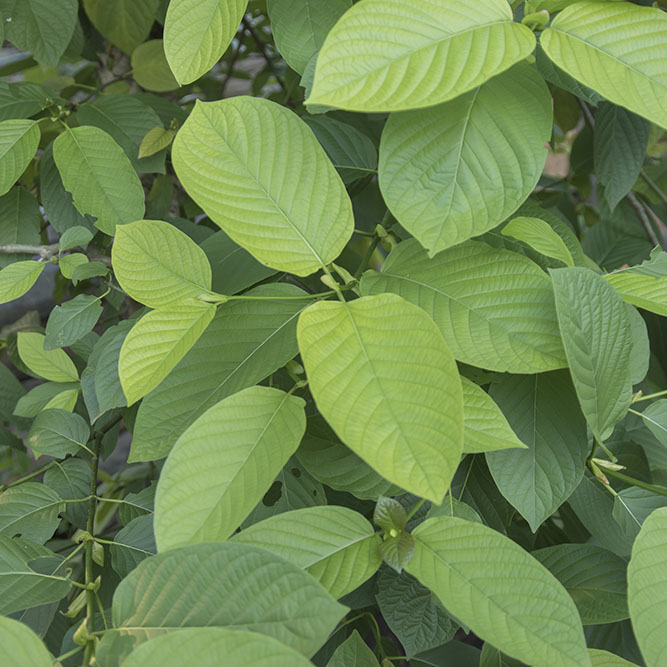Since you’ve searched the internet and found this article, the chances are you want to learn more about the plant named Mitragyna speciosa: more commonly known as kratom. If you have used the herbal leaf before (or if you would like to try it for the first time), then seeking knowledge about the vegetative substance is a smart decision. And you’ve come to the right place for enlightenment. At Kratom Geek, we cut through the clutter of all those marketing gimmicks out there and focus on educational materials for kratom, covering all the scientific discoveries of the plant’s fascinating alkaloids.
But before we get into those topics, we need to discuss the origins of kratom. After all, you can’t truly understand a plant’s molecules without studying the plant that hosts the compounds. And there is a lot to uncover when researching the substance called kratom.
What is Kratom?
Kratom is a tree that grows wild in the tropical regions of Southeast Asia. The trees are indigenous to countries such as Thailand, Malaysia, and Indonesia. The surrounding countries and provinces in the region are also home to the native species. All of those territories provide the much-needed climate and environmental conditions that are necessary for the plant to thrive in the wilderness.
The leaves of a kratom tree were used for generations by rural peasants in that section of the globe as an herbal remedy to battle pain, fatigue, diarrhea, and as a substitute for opium. We also find it was used by natives in religious ceremonies and to relax after working in the uncompromising heat outside on the farms.
But even though the tree’s leaves were known as a folk remedy to inhabitants in the area for centuries, it never gained any traction in western civilization until Peter Willem Korthals—a botanist with the Dutch East India Service—discovered its existence in 1839. Korthals originally coined the tree with the name Stephegyne speciosa. The scientific name and classification went through several iterations throughout the years until George Darby Haviland, a British surgeon, gave it the name in 1859 that we still know it as today: Mitragyna speciosa.
The plant would soon fade into obscurity afterward until we see a resurgence of interest in the alkaloids found inside the plant at the beginning of the 21st century, played in part by the ongoing opioid epidemic prevalent in American culture.
The Traits of a Kratom Tree
Whenever a kratom tree’s growth occurs naturally within an ecosystem comprised of rainforests, the plant can top heights of 80 feet. But most of the trees grown by local farmers in the region are smaller, presenting a more stunted growth. Those plants grown on farms will usually peak when it gets to be around a thirty-foot-tall tree. So, we find that kratom seems to mature differently in the wild.
Even though the areas where humans have settled in the region share the same hot, humid climate, it plays a part on the characteristics of the tree when it’s cultivated in domesticated conditions. And that’s because the tree is native to rainforests, so the survival of the species is dependent upon the process of natural selection. Since there are other trees in close proximity to one another in the dense forest competing for sunlight, those inherited genetic traits are vital for the plant’s survival.
The foliage and branches of a kratom tree can reach a width of 15 feet. On those branches, a kratom leaf grows around a half-foot in length and close to half that in width. But just like the dimensions of the tree in the wild, leaves in the rainforest can tend to get a bit larger. And these leaves are primarily ovate shaped, with differing characteristics of color as each leaf matures.
The Traits of Kratom’s Foilage
You’ll typically find kratom sold in powder form on the market, with vendors claiming the crushed leaf was from either red, green, or white-veined strains of the plant. However, this is a misnomer. All kratom in existence is from the same strain. But the veins of a kratom’s leaf will change colors throughout its lifespan. So you can determine the approximate matureness of a leaf by simply looking at its veins.
The colored veins in each leaf are the result of pigmentation produced by the leaf’s carotenoids. At the beginning of its life cycle, the veins are slightly-white colored. But as the leaf matures, it begins to take on a greenish hue. Then when it reaches full maturity, the veins will produce a reddish color, meaning the tree will shed this leaf shortly after. Besides representing the vegetative cycle of the leaf, these shifts in colors also indicate a change in the concentration of alkaloids present in kratom.
And the alkaloid contents of each leaf helps to determine the effects of kratom whenever the product is consumed by a person. So it’s easy to see why those compounds would play a large role in the therapeutic benefits associated with kratom. But as with any plant, several other factors—besides the plant’s maturity—enter into the equation when determining its molecular structure. Some of those conditions are the region the tree is cultivated, nutrients received, and environmental conditions that help nurture the plant.
How to Consume Kratom?
Kratom is traditionally prepared in its native region as a tea and drank throughout the day by local practitioners of the herbal substance. In fact, they are known to prepare large batches of the tea and let it boil for hours, creating enough to supply them for the duration of the workday as they labor in the fields. The tea provides them with a stimulating effect, generating a necessary boost to carry out their jobs without signs of fatigue. A few farmers say they sometimes pick the leaves and chew it up before spitting it out. While others say, they eat the leaves whole.
In America, however, you can find a variety of kratom products at your disposal. And the ways people consume kratom are just as varied. But for the most part, kratom is purchased as a crushed leaf in powdered form. But you can also find it in capsules, extracts, and pressed tablets. Those forms of kratom are usually taken by people who don’t like the bitter taste of kratom tea. But kratom’s bitterness is a byproduct of the alkaloids that produce its therapeutic effect—alkaloids are uniformly bitter as a class.
To mask the flavor, some people perform what is called a “toss and wash.” This terminology comes from the procedure of scooping a spoonful of kratom into your mouth and immediately drinking something afterward. While it doesn’t subtract from the taste, it does get it over quickly. And some people even mix kratom with their food.
Kratom Tea is the Most Sanitary Way for Kratom Consumption
I, in no way, would ever deem to tell you how you have to consume your kratom. Every person has a right to choose their particular method of consumption as they see fit. However, I would like to remind you that kratom leaves are harvested in another country that doesn’t have the same federal guidelines in place the United States does, so there is a real possibility that contamination can take place during the production process. With that said, it’s in your best interest to take kratom after it has been brewed as a tea. Boiling a substance in water is known to kill most of the active bacteria found in food products.
So boiling kratom is a great way to kill any vegetative microbial pathogens that could potentially be present from overseas. And boiling kratom is also a great way to make sure no pathogens that might be present in your home ever pollute your kratom products, too. But your main concern should be the possible contaminants from outside our country. While certain vendors perform lab tests to maintain a safety net for its consumers in this regard, unfortunately, not all of them do. So, it’s in the best interest of your health to make sure you’re going the extra step in preparing your elixir at home.
As the old proverbial saying goes: “It’s wiser to be cautious than to be hasty or rash, and so do something you may regret later.”






